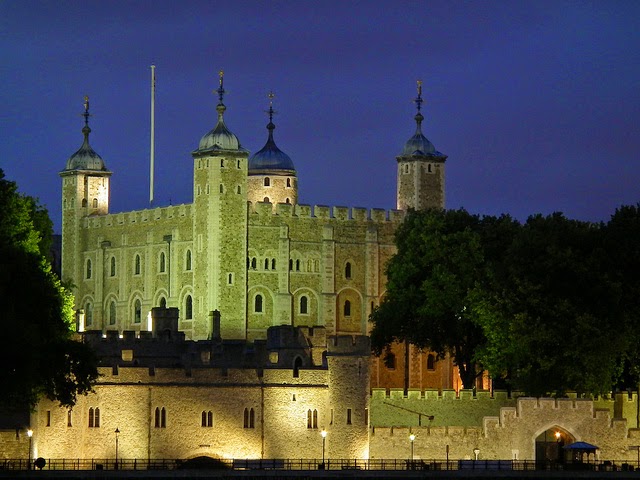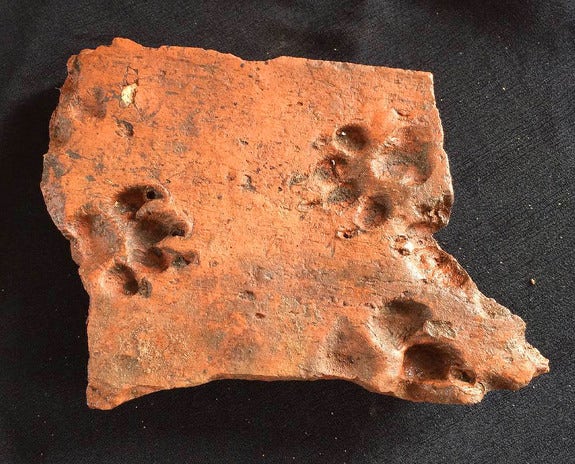 |
| Warwick Castle, by Extra Medium on Flickr |
There are more
than a thousand relics, ruins and remnants of the great stone castles that once
dominated England. It’s easy to think, after seeing pictures of the likes of Warwick Cast, or the Tower of London, that the all the people of Medieval England
either lived in gigantic castles, or mud huts which have since disappeared.
Neither is really true. There were enough people groups and building styles
it’s like to drive you mad, but I will attempt to tell a little of what I’ve
found out.
Background
 |
| Maiden Castle |
The Bronze and
Iron Age Celts constructed ring forts (in Ireland) and hill forts all over the
British Isles. The distinctive circles can be seen under the turf especially
well at Maiden Castle in Dorset,
the largest of the Iron Age hill forts. For the most part, these hill forts
were small towns, surrounded by concentric rings of earthworks and palisades
with very little stonework. In Ireland, on the other hand, the ringforts were
built of stone.
 |
|
The great builders
of stone, however, were the Romans, who showed up in AD 43 and, over the next
four hundred years, completely remodelled the face of Britain. The Romans had a
particularly efficient way of laying roads and walls, as was demonstrated by
the building of Hadrian’s Wall along the Scottish border in just six years. Distinctive
Roman walled cities sprang up in places like London, Chester and York and
because of the relatively gentle British climate, the Romans and Romanized
Britons were able to build Italian style villas, which were envied by even the
aristocrats in Rome. Probably the most famous Roman site in Britain is the city
of Bath in Somerset with its partly rebuilt, but still functioning bathhouse.
The Anglo-Saxons
The Romans left
Britain in AD 410 and the Angles and Saxons took their place. For many years,
archaeologists declared that since they couldn’t find anything really
conclusive, the early Anglo-Saxons had no distinctive building style and never
built anything of note. Which, of course, isn’t true.
It now appears
that Viking and Norman eradication of everything Saxon, coupled with the
Anglo-Saxon habit of building with wood, pretty much wiped out any remnants of
Anglo-Saxon architecture. Yet, in some nooks and crannies of England, there are
still some bits and pieces that the Normans forgot and the elements haven’t
rotted away.
 |
| The Exeter City walls show layers of history; Roman on the bottom, Anglo-Saxon in the middle, Norman on the top |
It seems that the
Anglo-Saxons took their inspiration from Roman architecture, incorporating
columns and arches into their buildings. The Saxons didn’t have the expertise
of the Romans, but they made every effort to repair or replace crumbling Roman buildings and walls. Through the Dark Ages, the Anglo-Saxons didn’t build great
stone castles, but they did build small wood and stone churches. Their houses
were probably very much like our vision of an English cottage of timber and
daub and a great thatched roof. Their castles or Burhs (the root of the word and concept ‘borough’),
like the Celtic hill forts of old, were made of earth and wood.
 |
| The Anglo-Saxon tower on Trinity Church in Colchester
by Nic McPhee on Flickr
|
Under Alfred,
England really became England and for some reason, around that time, the
Anglo-Saxons caught the Cathedral fever and started to build big. I'm not sure why they felt
the need to build massive cathedrals rather than massive castles;
perhaps it was because prosperity abounded and, in a unified kingdom, everyone
felt more secure, even though the truce with the Danes was quite shaky. Either
way, they probably would have been wise to build castles instead of cathedrals,
considering what came over the sea in 1066.
The Normans
 |
| The White Tower, built by William the Conquerer, was probably the first significant Norman structure in England The ornamental domes are not original to the building by Stewart Morris on Flickr |
The Normans were
master castle builders. They were so prolific, they built them all over the
British Isles, all over France, all over Italy and all over the Holy Land. They
even imported stone from France to build structures like the Tower of London
and remodel Canterbury Cathedral. They were trying to make a statement with
their massive, stark designs and used castle building as the chief means of
taking over territory. In order to build a castle, a noble had to ask the King
specially, and even then, the noble was limited to the number and style. Only
the Marcher Earls of the boarder and interior of Wales and Ireland could build
castles as they chose. Even now, Wales has more castles per square mile than
anywhere else in the world.
 |
| The Jew's House by David on Flickr |
But the Normans
weren’t all about castles. After they leveled the Anglo-Saxons, took out the Danes
and made inroads into Wales, Ireland and Scotland, they remodeled or rebuilt
all of the Saxon Cathedrals and added some of their own. They built great new
monasteries on Saxon foundations and added new layers of stone over Saxon
repairs of Roman walls. But I think the
most fascinating and intimate structures are the few remaining examples of
Norman houses.
 |
| Saltford Manor House |
Probably the
oldest remaining town house in England is the Jew’s House in Lincoln. It was
built sometime in the mid-1100s and it looks like a very tiny Norman castle
with four walls and windows. On the same street is the aptly named Norman House, which is dated between 1170
and 1180 and probably also belonged to a Jew before the Jews were expelled from England.
An even older example of Norman architecture is
the Saltford Manor House in Somerset, which is considered to be the oldest continually
occupied private house in England. It was built before 1150 by William Fitz Robert,
2nd Earl of Gloucester for the Bishop of Coutances.
Afterwards
 |
| Bodiam Castle in East Sussex, is much smaller than it appears by Brian Snelson on Flickr |
Norman
Architecture spanned the 11th and 12th centuries. By the
High and Late Middle Ages, castles were becoming less menacing and more showy;
Bodiam Castle, for example was built to look grander than it really was and
Henry III build a beautiful Palace in the middle of the stoic Windsor Castle.
People were
starting to become interested in windows and Motehouses like Markenfield Hall
and Ightham Mote were built with the aim of balancing comfort and defense.
After a while, defense was forgotten, the Middle Ages were left behind and the
Tudor period began.
~Psyche




